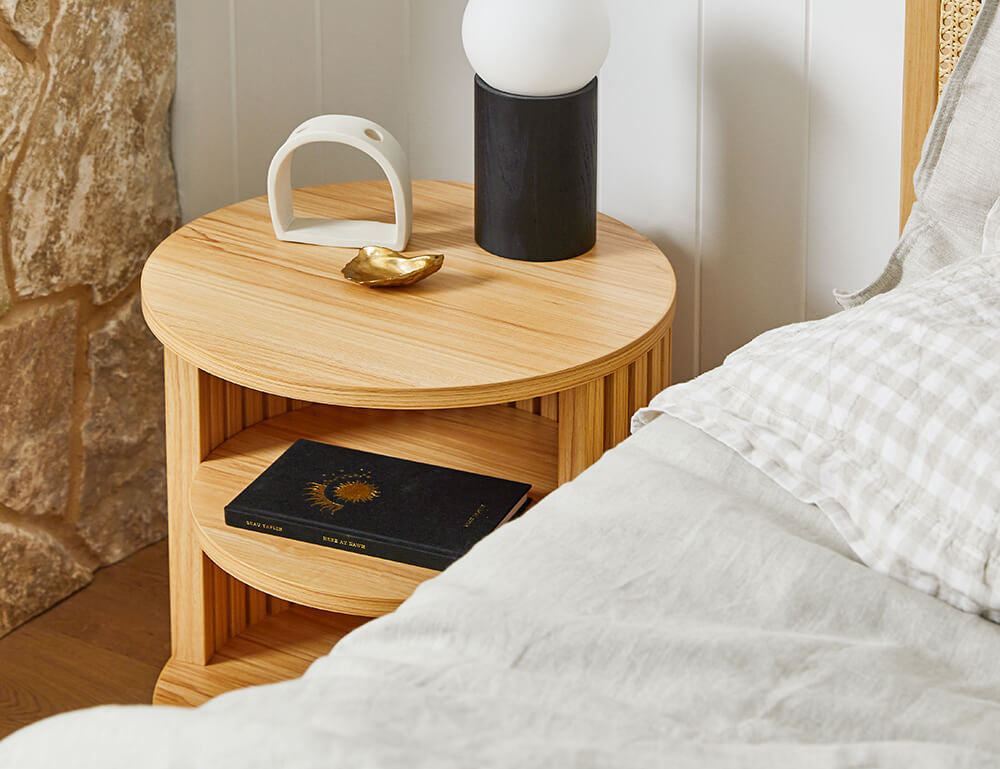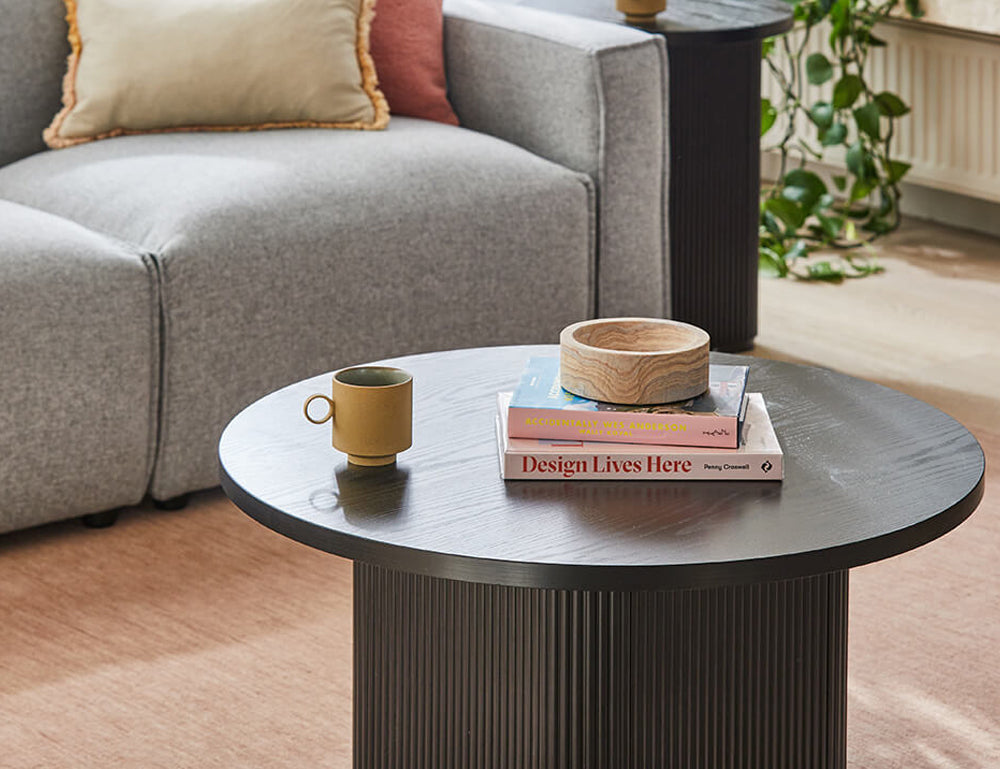Your bed is your bedroom’s most important fixture, so how do you look after it to keep it as beautiful as the day you brought it into your home, safe and comfortable, and make your furniture last longer? Our care guide has all the tips and information you need!
General Bed Maintenance Tips
The good news is that your bed needs little maintenance if they have been correctly installed. However, everyday use, whether it is tossing and turning or your littles using it as a jumping pad, is bound to take a toll. Therefore, it is a good habit to check your fixtures every six months or so to ensure that everything is in working order. The last thing you want is a minor issue, such as a loosened screw, turns into a bigger problem if you ignore it for too long.
-
Make sure that all the fixtures are nice and tight (not wobbly) but not too tight to avoid cracking the wood. The best way to go is to proceed progressively when installing your bed: start with relatively loose fixtures to ensure that everything is in place but can shift slightly as you adjust the other parts of the bed and give it a good overall tightening in the end.
-
Central support legs are a great addition for extra stability, but they are not meant to touch the ground when nobody is using them: they should hoover approximately 0.5 cm off the floor.
-
Oops! Do you notice any missing or broken fixtures? Do not hesitate to reach out! As long as your bed is under warranty and we have the parts available, our customer service will be happy to send you a replacement.
Caring for Pinewood Beds
Our beds made of solid pinewood, such as the Cali bed frame and the Coastal Pallet bed frame, are sturdy and elegant. Here is how to keep them looking good as new for many years to come.
-
Wood is a natural material and will react to changes in the environment. Small cracks and variations are normal, but it is best to keep your bed away from direct sunlight, moisture, and heat sources (like windows or radiators) to avoid damaging it.
-
For cleaning, use a dry or just damp lint-free cloth and avoid harsh chemical products. If you want to go beyond regular dusting and maintain your pinewood bed’s unique finish, you can rub unperfumed block wax all over your furniture or raw linseed oil to re-treat the surface. Wax may leave behind a slight residue that will be absorbed over time. However, it is best to stay away from any product containing silicone since it will contribute to attracting dust.
-
Make sure to clean any spills immediately. If you notice any stubborn stains, mix a tablespoon of white distilled vinegar with about 150 ml of warm water in a spray bottle and spray a fine mist of the solution onto the affected areas without soaking the wood and immediately wipe it away using a dry cloth.
Caring for Wood Veneer Beds
We love wood veneer for its beautiful look and ease of maintenance, which is why we use it for many of our furniture, including the Coco bed frame, Mia bed frame, Cuppa bed frame, and Terri bed frame. Your wood veneer bed will only require your attention once or twice a year to ensure that it remains as good-looking as the day you set it up for a long time.
-
Add wiping your bed frame with a damp cloth as part of your regular cleaning routine to keep dust at bay.
-
To keep the wood looking good as new, you can apply a thin, even layer of good-quality wax polish every 6 to 12 months. Stay away from any sprays and polishes containing silicon since they tend to form a sticky residue that attracts dust.
-
Your wood veneer bed’s biggest enemy is liquid spills, which can cause permanent warping and discolouration. To avoid issues, wipe clean as soon as you notice any problems. In addition, scrubbing your wood veneer furniture can scratch them, so use a non-abrasive sponge or cloth.
Caring for Linen Beds
Linen beds, like our Hyla bed frame, are both elegant and relaxed. However, keeping them pristine can be intimidating. The good news is that our removable slipcover can make everyday maintenance a breeze, even in a busy household.
-
Linen is a naturally durable fabric, but it is not stain-resistant. Therefore, it is best to treat any spillage rapidly to avoid settling. Treat the stain immediately with specialised products or home solutions, depending on the nature of the liquid. A soft brush may be sufficient for regular maintenance, like clearing dust.
-
Many linen upholstery can be washed using the gentle cycle on your washing machine or hand-cleaned with cold water. However, the dryer may cause some shrinkage, so air-drying is the best – and more eco-friendly – solution.
-
Keep your linen beds away from direct sunlight to avoid discolouration.
Caring for Rattan Beds
Rattan beds, like our intricate Lana bed frame, bring an exotic touch into your bedroom. But how can you keep this elaborate clean? It may be easier than you think.
-
The nook and crannies in your rattan bed can be magnets for dust and dirt, so make sure to clean them regularly – ideally, weekly – using the upholstery brush attachment on your vacuum.
-
In addition, we recommend a more thorough monthly clean using a damp cloth to catch any accumulation before it becomes problematic. Faux rattan, like the one used in our furniture, preserves the beautiful look of this technique while making it easier to include in a rowdy household as it is less subject to mould and stains.
Caring for Upholstered Beds
It does not get much cosier than an upholstered bed like our Casa bed frame or Nook bed frame. However, they are easily subject to stains, whether it is an accident like a few drops of your morning coffee or regular use like the oils present on your skin. Here are some tips to keep your furniture as good as new.
-
If your upholstered bed includes a removable – and, even better, a machine-washable – slipcover, then maintaining it is a no-brainer. Simply wash the slipcover regularly according to the manufacturer’s instructions, whether it is a spin in the washing machine or a trip to the dry cleaner.
-
For regular maintenance, you should brush your upholstered bed regularly with a fabric brush to eliminate the build-up of dust, hair, etc. In addition, it is best to spot-clean any mishaps as soon as possible to avoid stains settling into the fabric, especially day liquids such as wine, coffee, or makeup stains which can be challenging to get rid of after they dry out.
Caring for Metal Beds
Metal beds, like our Goldie bed frame and our Sia bed frame, have been a favourite for centuries thanks to their durability, sleek look, and ease of maintenance. They are an excellent choice for a rowdy household, but you should still set aside time to keep them looking their best.
-
Our metal beds are treated to be rust-resistant, but you still want to avoid any scratches that could lead to further deterioration. Therefore, it is best to only use a soft brush, sponge, or fabric to clean up your metal beds.
-
A simple wipe-down with soapy water is usually enough to eliminate the dirt or occasional spill. You may use specialised products or even window-cleaning products for more stubborn stains.
-
If you notice any bumps or scratches, solve the issue as soon as possible with a fresh coat of paint or a marker in the same colour as your furniture. The paint on your metal furniture is not only there for aesthetics but also to preserve the metal’s durability.
Caring for Leather Beds
Leather beds are renowned for their sophisticated looks and durability. However, they still require some regular maintenance and care.
-
Leather is a delicate and living material which can be damaged permanently by stains and moisture. Always wipe away any stains with a soft dry cloth, especially liquid spillage.
-
Harsh products, such as polish, detergents, and spirit-based cleaners, can cause permanent discolourations and change the leather grain. Stick to dusting as much as possible and brush off any buildups.
-
Changes in temperature may cause the leather to crack, so avoid putting your leather bed near a source of heat like a heater.
-
Finally, direct sunlight can cause fading.











